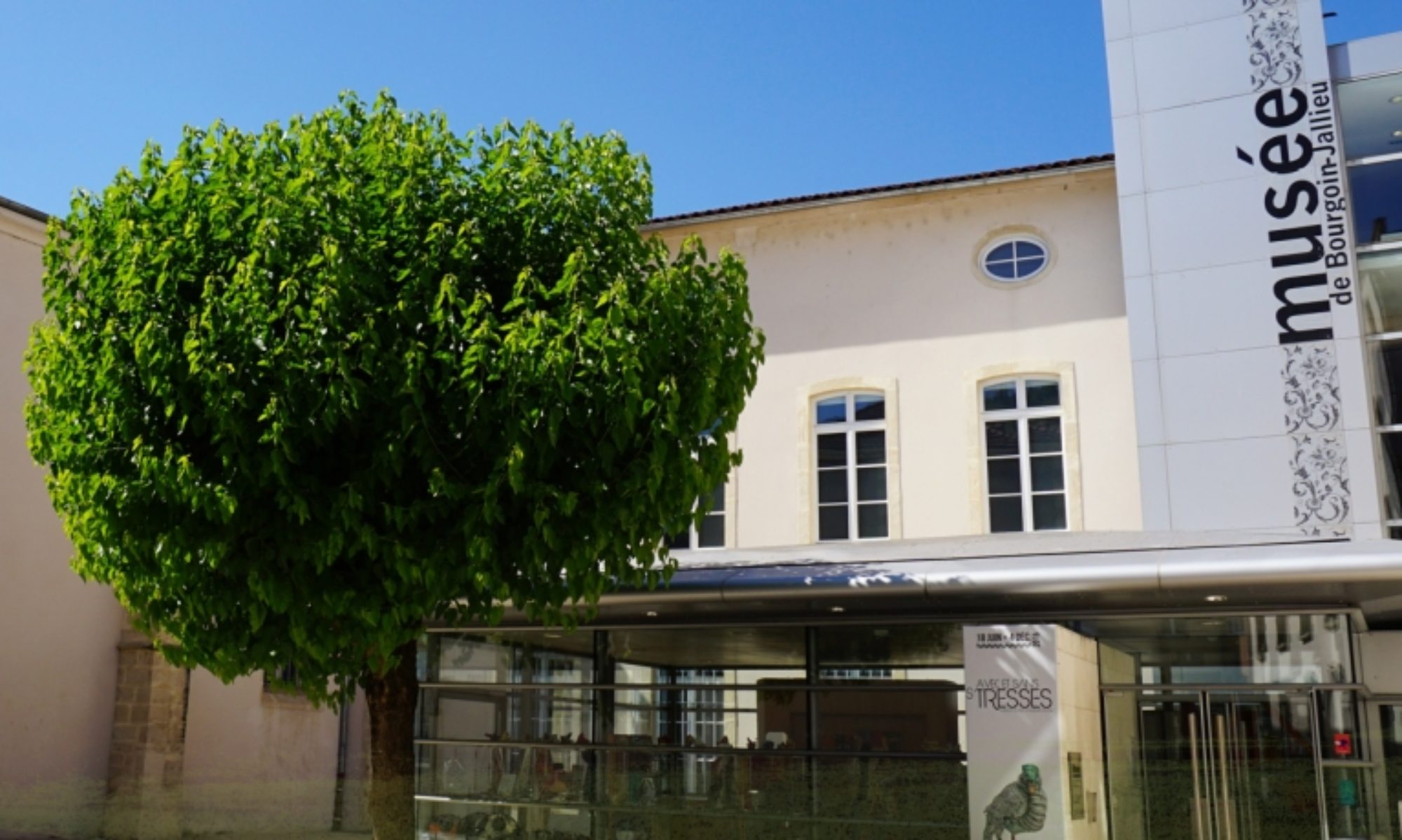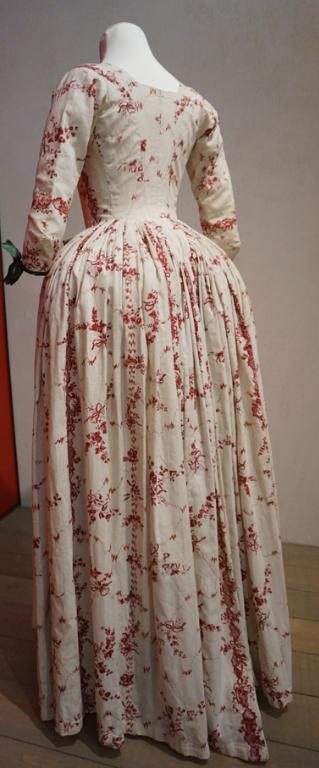This “robe à l’anglaise” was acquired by the museum with the support of the FRAM and the patronage of the companies Piolat Georges, Sofileta and Holding Textile Hermès (HTH), at an auction of the Maison Hamot collection on February 16, 2005. This prestigious house, founded in 1762 under the reign of Louis XV, was one of the most eminent in the trade of precious fabrics until its closure in 1999. This purchase was a valuable addition to the museum’s textile collection, which includes a large number of unprocessed printed fabrics but few assembled pieces.
The dress can now be displayed in full, following its restoration in 2017, at which time the petticoat was created. This restoration was carried out with the support of HTH. Over the petticoat, the mantle consists of a bodice which comes a point in the front and back and closes in the front with 13 small metal pins. It is lengthened with a small flounce bordered with green silk taffeta ribbon. The close-fitting, semi-long sleeves feature the same finish. At the waist, the skirt falls open to reveal the petticoat.
Copperplate etching
The outer layer of the dress is made from unbleached cotton, printed red on copperplates with garlands of flowers and small ribboned bouquets. The printing was carried out in Jouy-en-Josas or in Alsace, around 1785, but is representative of what was being done during the same period in Bourgoin-Jallieu, with the implantation of the Perrégaux factory in 1788.
Copperplate etching produces monochrome patterns. The plate is engraved with a chisel, with the artists focusing on tonal gradations and the interplay of light and shadow through the use of crosshatching. The engraved plate is then used to apply an etchant, composed of metallic salts, usually iron or aluminum, to the fabric. The operation is very delicate, because the etchants are colorless. Once the etchant has been applied, the fabric is dyed: the canvas is dipped, and the color sets on the areas where the etchant was applied. The bottom of the canvas, having been lightly colored, is then spread outside in the sunlight to whiten. The most commonly used dip was made from madder roots, which is the case for this dress. Depending on the dosage and the type of etchant used, the color can range from dark red to soft pink, from black to lilac, and from purple to brown.
Note that the stripes on the dress are an imitation of a technique called “warp printing”. This printing technique, used from the 18th to the early 20th century and applied to the warp threads before weaving, lends a certain fuzziness to the design. The warp is returned to the printer after a first very loose weave whose purpose is simply to secure the warp threads during the various operations. After printing, fixing, and washing, the weft threads are removed and the warp threads are permanently woven in.
Fashion in the 18th century: the “robe à l’anglaise”…
First appearing in France in the 1770s, this close-fitting down, called “English style” in France, was inspired by British fashion. English aristocrats had indeed acquired the habit, starting in the early eighteenth century, of dressing more simply while on their own estates away from London. Their everyday clothes were therefore elegant, but simpler, more comfortable and more practical to wear outdoors.
The English-style gown is characterized by its very tight bodice, coming to a point at the front and back and closing in the front. The sleeves are close-fitting, long or semi-long, and the neckline is wide and deep. For the sake of convenience and decorum, it is therefore usually concealed by a sheer or finely embroidered cotton shawl, slipped over the shoulders and crossing in front or tucked into the neckline. This is the so-called “lying shawl”, which concealed but also hinted that the curves might be fuller than they really were!
The fitted bodice contrasts with the full skirt, slightly puffed at the back with padding known as “cul de Paris “, [Paris bottom], produced here during the gown’s restoration. These curves enhance the narrowness of the bust and the fullness of the hips. The skirt falls open to reveal the petticoat, and is finished with a short train in the back.
The dress can also be worn “à la polonaise” [Polish-style]: hooks at the bottom of the dress enable it to be raised by means of three ties attached to the waist, to facilitate walking, which forms three folds at the back of the mantle.
With the ankles thus exposed, the profile becomes livelier. The 18th century was fond of symbols and other allegories. The three folds that characterize the gown worn “Polish-style” served as a metaphor for the division of Poland into three distinct provinces between Russia, Prussia and Austria in 1772, an event that left a deep impression on the French people.
…versus the French-style gown
Starting in the 1770s, the English gown was therefore given preference for everyday life. The less-practical “French-style” gown was reserved for ceremonies.
It is characterized by a whalebone petticoat, the hoop forming a contour that expands to the right and left but remains flat in the front and back. A fabric petticoat hides the whalebones and the mantle is opens fully over the petticoat. It is also open at the bust, over a richly decorated triangular belly piece pinned to the corset. The sleeves end in wide cuffs at the elbow, with one to three lace or gauze frills, known as “engageantes”.
The back of the gown is also distinctive, featuring large flat pleats that extend down to the ground in the train. Historians call them “Watteau folds” in honor of the painter Antoine Watteau (1684-1721), a great admirer of the French-style dress, which he depicted in many paintings.


